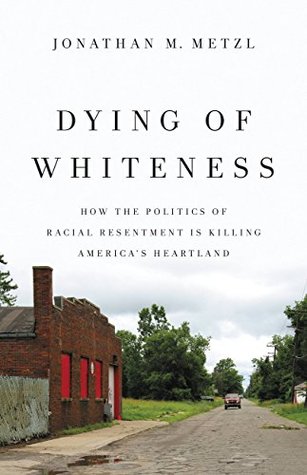More on this book
Community
Kindle Notes & Highlights
Read between
January 29 - February 1, 2022
on-the-ground white Americans make tradeoffs that negatively affect their lives and livelihoods in support of larger prejudices or ideals. By design, vulnerable immigrant and minority populations suffered the consequences in the most dire and urgent ways. Yet the tradeoffs made by people like Trevor frequently and materially benefited persons and corporations far higher up the socioeconomic food chain—whose agendas and capital gains depended on the invisible sacrifices of lower income whites.
White backlash politics gave certain white populations the sensation of winning, particularly by upending the gains of minorities and liberals; yet the victories came at a steep cost. When white backlash policies became laws, as in cutting away health care programs and infrastructure spending, blocking expansion of health care delivery systems, defunding opiate-addiction centers, spewing toxins into the air, or enabling guns in public spaces, the result was—and I say this with the support of statistics detailed in the chapters that follow—increasing rates of death.
Looking closely at the data on health outcomes between Tennessee and neighboring Kentucky uncovers how, when averaged across the population, Tennessee’s refusal to expand Medicaid cost every single white resident of the state 14.1 days of life.
What if suicide researchers are barred by their own government from obtaining federal funding to research or compile data about the leading method of lethal suicide in the United States? The method of suicide that kills more Americans than all other intentional means combined, including hanging, poisoning, overdosing, jumping, suffocating, or cutting? The method that kills more Americans than all of the murderers, robbers, terrorists, and attackers put together as well?
One landmark study of impulsive suicide attempts in Texas found that 24 percent of young people spent less than five minutes between the decision to commit suicide and the actual attempt, that 70 percent took less than an hour, and that “male sex” and a history of having been in a physical fight—but not depression—were found to be risk factors for these impulsive suicide victims.
Roughly 85 percent of firearm suicide attempts result in death. For this reason, firearms rank at the top of what researchers call “case-fatality charts” that list the percentages of people who die from the different methods of suicide.
But white Americans dominate death-per-suicide-attempt categories for one main reason: they remain dramatically overrepresented in civilian death data about firearm suicides.
Similarly, a 2015 Brookings Institution report relied on data from the National Center for Injury Prevention and Control (NCIPC) database to show a remarkable segregation whereby the vast majority (77 percent) of white gun deaths were suicides, while “less than one in five (19 percent) is a homicide.” These figures were nearly opposite in black populations, where “only 14 percent of gun deaths are suicides but 82 percent are homicides.” Broadly put, a white person in the United States is five times as likely to die by suicide using a gun as to be shot with a gun; for each African American who
...more
Surveys of US public opinion suggest that many Americans remain largely unaware of the prevalence of white gun suicide—or of the links between gun ownership and gun suicide at all. A 2017 survey found that “fewer than 10% of gun owners with children (or gun owners who had received firearm training) agreed that household firearms increase suicide risk.”
For many white men in the South, the word government elicits an autonomic peptic response. Like asking about “gun control” in Missouri, phrasing a question about “government” in states like Tennessee hangs heavy with historical inflections.
Researchers estimate that over 60 percent of people who file for bankruptcy in the United States do so because they are unable to pay for medical costs due to a lack of health insurance or so-called underinsurance (insurance not sufficient to cover the costs of a major health incident).
We did away with a lot of deductions and credits for poor families over the past two years. And then we came back in 2015, and we didn’t have the money to pay the bills in the state. So then we raised the sales tax, we raised the cigarette tax, we did away with itemized deductions. We look at the cumulative impact of those three tax changes… chunks of tax changes. And the poorest 40 percent of Kansans saw an average net tax increase. The poorest 40 percent. They saw their taxes go up as a result of this. Whereas the wealthiest 5, 10, 15 percent saw just overwhelming reductions as a result.…


